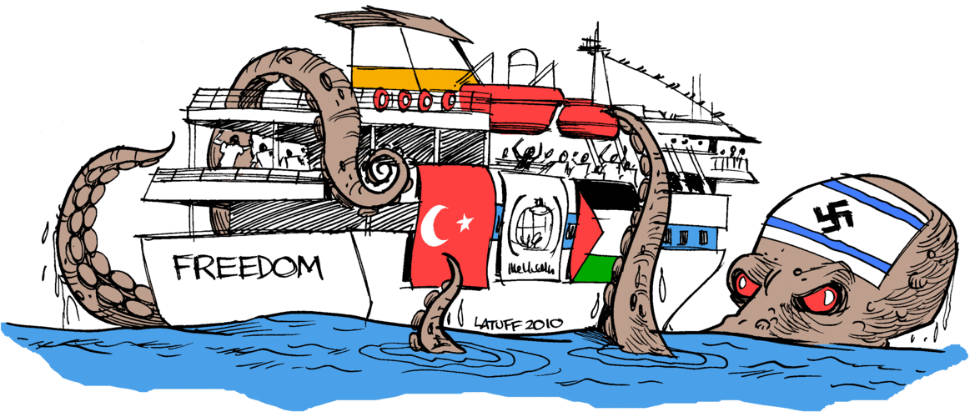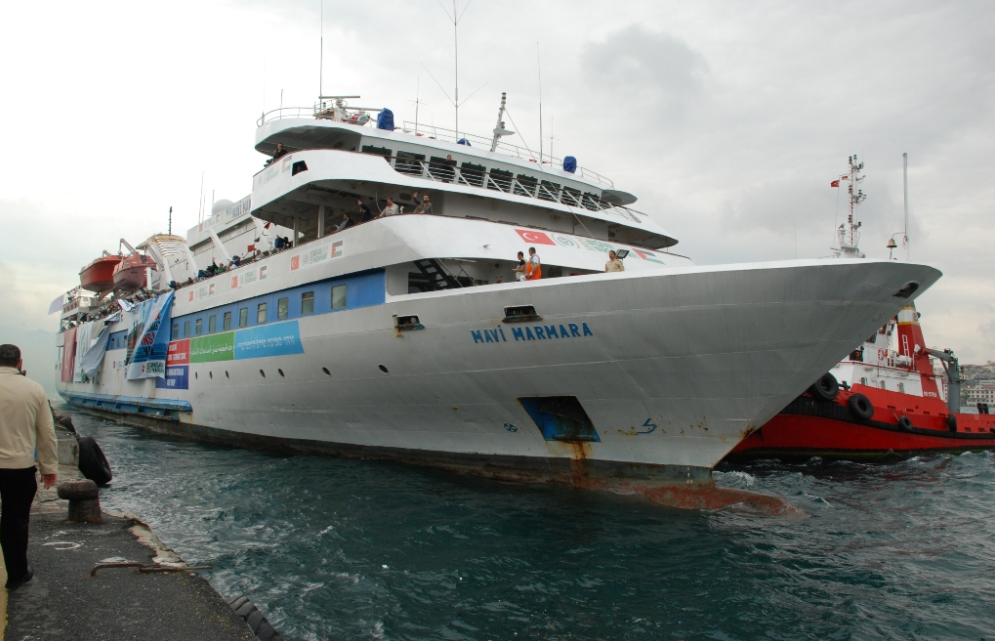Flotillas and Freedom: The History and Journey Ahead

By: Ramsey Zeidan / Arab America Contributing Writer
On Monday, the viral Gaza freedom flotilla Madleen, carrying Swedish human rights activist Greta Thunberg and 11 other volunteers, was detained in international waters by Israeli forces. Currently, a third of the activists aboard the Madleen have been forcefully deported to their home countries, while eight others remain in detention in the port city of Ashdod. The Madleen flotilla was not the first of its kind, and it certainly won’t be the last. In fact, the origins of the freedom flotillas can be traced back to 2008, where the movement to free Gaza raised its sails.
From 2008 to 2016, international activists have sailed 31 boats to challenge the blockade of Gaza, with a few others (including Madleen) failing in recent years. These boats have mostly come from the Freedom Flotilla Coalition (FFC), an NGO established in 2010 to follow in the footsteps of the Free Gaza movement of the 2000’s. According to the Freedom Flotilla Coalition’s official website, their ultimate goal is to break the illegal Israeli blockade of the Gaza Strip and address the humanitarian crisis. Throughout its time, the FFC has produced several notable campaigns in pursuit of a free Gaza.
The Liberty
Since the naval blockade of the Gaza Strip began in 2007, several flotillas have attempted to break through to deliver aid. Arguably the most important was in August 2008, with the Liberty and Free Gaza civilian ships. 44 volunteers from 17 different countries sailed from Cyprus with their sights set on Gaza, carrying medical aid. Despite radio interference and stalking by Israeli naval vessels, the ships made landfall and broke the siege. The passengers remained in Gaza for around a week, distributing medicine and accompanying fishermen to keep them safe from the Israeli navy. The boat left with 7 Palestinian passengers, who made history as the first Palestinians to freely leave their own country.
The Liberty was part of the Free Gaza movement and marked a major success, which inspired the campaigns of the FFC.
The Dignity
Following the success of the Liberty, the Dignity launched in November of 2008. It was the second and last mission to break the blockade without a violent altercation. Aboard the Dignity were 27 doctors, lawyers, journalists, and human rights workers, hailing from 12 different countries. The ship carried nearly a metric ton of valuable medical supplies and was a symbol of hope for the people of Gaza. Unfortunately, subsequent trips by the Dignity were met with retaliation, and the ship nearly sank after being rammed by a warship at sea.

The Mavi Marmara
In 2010, tragedy struck onboard the Mavi Marmara, a passenger ship part of a flotilla sent by the Freedom Flotilla Coalition. While in international waters approaching the blockade, Israeli forces boarded the Mavi Marmara and used tear gas and live bullets against the Turkish human rights activists. On a ship carrying nearly 600 passengers, the attack killed ten and injured 56 more. Condemnation swiftly followed the Israeli raid, yet criticism from the international community amounted to practically nothing. Israel apologized for “operational mistakes” in the raid circa 2013.
The activists became martyrs in their own right, empowering resistance to the occupation of Gaza in Turkey, Europe and beyond.
Freedom Flotilla III
Freedom Flotilla III was launched in 2015 in another major attempt by international activists to break Israel’s naval blockade of Gaza. This flotilla was headed by the Swedish ship Marianne, housing over a dozen activists. Sadly, the ship was intercepted illegally in international waters, and everyone on board was detained for questioning, then deported shortly after.
Just Future for Palestine Flotillas
The 2018 Gaza Freedom Flotilla – also known as the Just Future for Palestine – departed with the same goal of ships before it. A smaller campaign, the Just Future for Palestine sent two ships: Freedom and Al-Awda (The Return). Smaller yachts trailed the two ships but were intercepted at sea. Both ships were seized and taken to Ashdod, and activists reported being tasered and assaulted by Israeli forces.

Moving Forward
Both literally and figuratively, the journey of the freedom flotillas to ending Gaza’s naval blockade is long. Missions have had mixed success, with more recent flotillas facing detention, violence, and death. However, with the success of the Liberty in mind and the recent coverage of the Madleen, the flames of activism have been reignited. Supposedly, the FFC has already begun planning additional maritime campaigns to Gaza. Activists and volunteers across the world have also expressed interest in a large flotilla mission, given the urgency of the starvation crisis in Gaza. Ultimately, the humble civilian flotilla will forever be etched in history as a symbol of resistance, regardless of the success of future campaigns.
Want more articles like this? Sign up for our e-newsletter!
Check our blog here!








